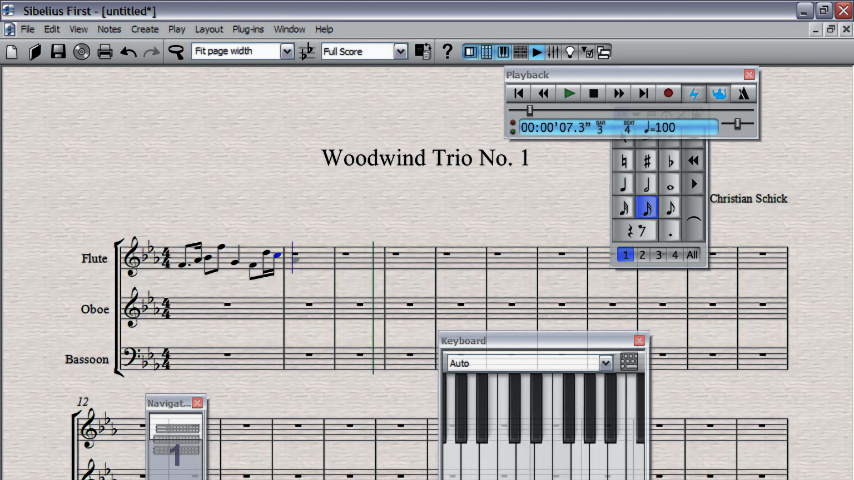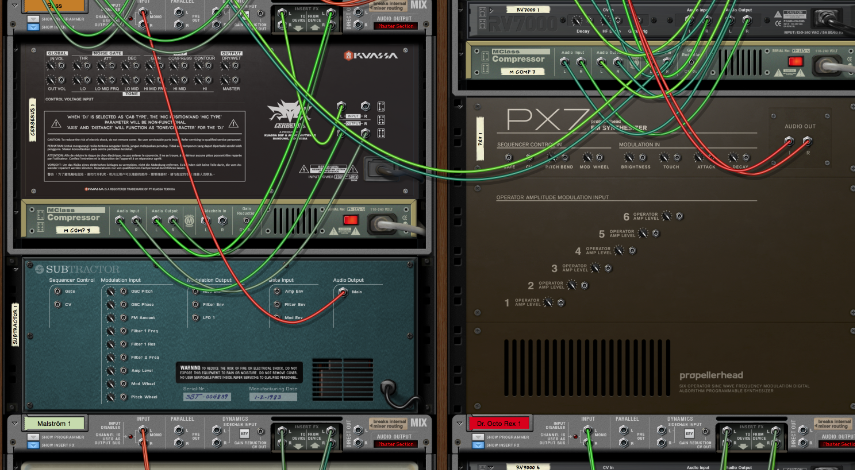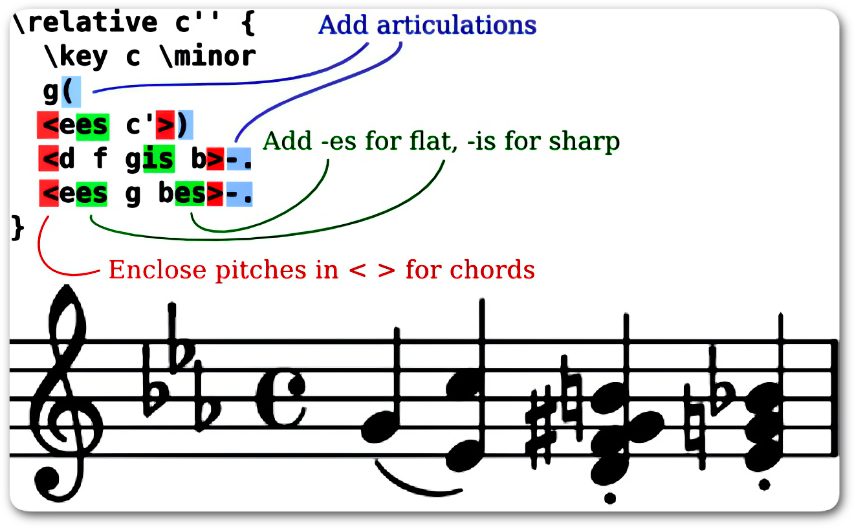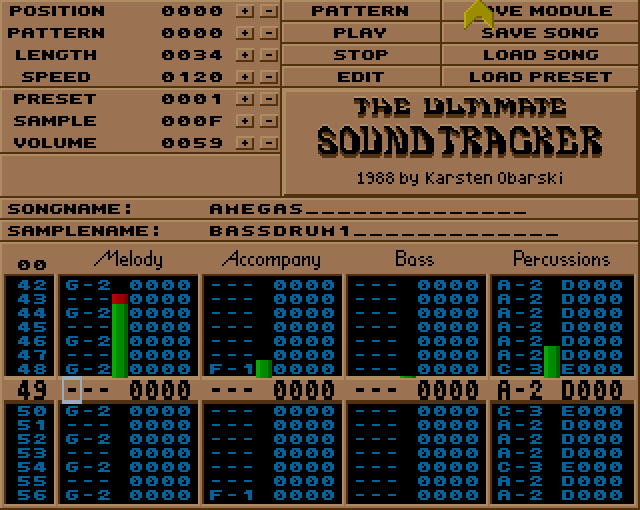Why I'm Obsessed With Tracker Music
I posted on Twitter that I was searching online trying to find out how musicians who used tools like Impulse Tracker made their digital instruments. I immediately got self conscious posting about “chiptune”. That’s a word I’m scared to be associated with, due to the fact that I’m old enough to remember people using the word nerdcore derisively at Warped Tour and my perception that the “chiptune” community is to music as the Smash community is to esports.
There’s a reason that I’ve developed an intense fascination with trackers in the last year or so. It’s the intersection between my work programming computers as an adult, and my early experiences making music as a child.
MIDI and me
My childhood music teacher Bill Moulton set me on the path of making music with computers by encouraging me to submit compositions to the Vermont MIDI Project.

In that era the hot new thing in music education was MIDI notation software; Encore and Sibelius. As a kid I could tell you that MIDI stood for Musicial Instrument Digital Interface but all it really meant to me was that a computer could play back my scores in a few different voices, or transcribe and quantize input from a piano that I could refine or edit.
The way that Bill taught me to make music… it wasn’t that the computer offered anything new for composers, but that it was a tool to make the old methods of composition faster and easier.
Things Get Fruity
Things changed when Tom Mays arrived at my school as the technology coordinator. He gave me a cracked copy of Reason to play with.
It was the first time I saw a piano roll, or songs arranged visually as clips and loops. Tom was most fascinated with the Rack; GUI representations of analog synthesizers and drum computers, with dials and switches you could turn to set their parameters. You could even flip the rack around to manage cables, changing how components were routed and interacting with each other.

Like Bill, Tom saw that the computer was a smooth alternative to analog methods. Where Bill got realtime playback and the conveniences of drag-and-drop and copy-and-paste, Tom got an entire rack of digital “gear” that could be flipped around and rewired almost instantly, and the ability to record live work that he could re-arrange and export.
During those high school years a lot of my friends got interested in music production and remixing, too. Their tools of choice were pirated downloads of either Acid or Fruity Loops. Because they were inspired by hip-hop, they loved step sequencers, loops, and hunting for cool samples to use.
I liked linking blocks of downloaded loops and patches together into remixes, too. I liked mashing on the buttons and dials of the Rack until I stumbled upon an interesting patch, stringing wires together and making virtual devices play off each other. Figuring out how to use a sequencer as a gate to make a synthesizer produce pulsing sounds felt like mastering some kind of magic.
I wanted to better understand what I was doing. I wanted to make more than arrangements of other people’s loops. If I had an idea for a sound, I didn’t want to spend time trying to find one someone already made. I wanted to know how to produce it myself.
I lacked the time and the frustration tolerance to figure it out.
The Missing Link
For about 15 years after those early days playing with MIDI and DAWs, I didn’t write any music at all. A real shame because I always lied to myself (and everyone who asked if I was still doing music) the whole time by saying that even if I wasn’t studying or working in music full time I could keep it up as a hobby.
Then a couple things happened:
I met my wife, whose mother is a professional musician. I started to think about classical composition again — maybe I could compose something small for the two of us to play together — and looked around to learn how music notation software had changed since I was 13.
One piece of software I discovered that began to reshape my view of computers and music was LilyPond. LilyPond is sometimes described as LaTeX for music, because files in LilyPond are text that “compile” to sheet music. I had by this time developed a bit of a fetish for version control and flat-file content management, so the idea that I could compose and track changes to music as plain text was mindblowing.

What I admired most was that LilyPond embraced computation. Instead of using a computer to emulate or enhance old ways of working, it turned music notation into something akin to computer programming.
Later I saw a mini documentary about how people made music with the Amiga. Seeing someone walk through the process of using ancient hardware and software was a lightbulb moment 💡

Watching a tracker at work was like seeing distilled digital music. A literal list of instructions to play n note of s sound at t time and v volume.
The structure of tracker music was the missing link that allowed me to begin to understand what I had been doing arranging notes in MIDI notation software and using sequencers when I was a kid.
Now what?
I’m trying to learn the ins-and-outs of at least one flavor of tracker software.
Looking back at early trackers and seeing how fully-featured the modern equivalents like OpenMPT, SunVox, or Renoise are by comparison I realize how spoiled I’ve been. I’m considering using something as archaic as an Impulse Tracker clone like Schism Tracker to feel like I’m getting closer to the “bare metal” of making music with a computer.
Ultimately what tracker music represents to me is a way to genuinely turn a personal computer into a musical instrument. That’s something I’ve wanted to do for a very long time.